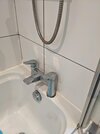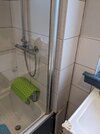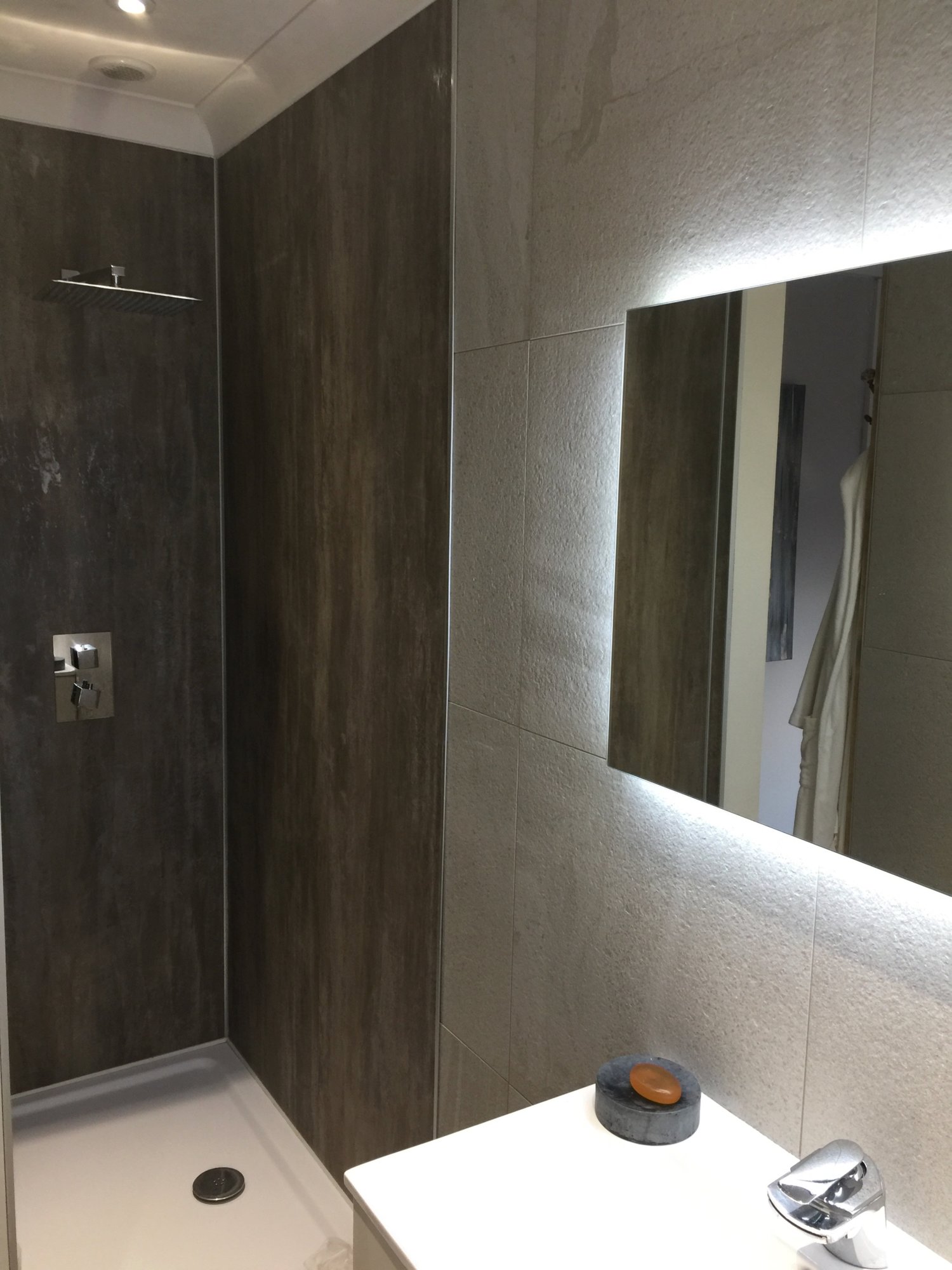Hi. I have a stud wall at the tap end of my bath (I say it's a stud wall, but it doesn't seem to have a proper frame). The tiles over it have become cracked over time, presumably because of movement, so I want to replace them with wet wall panels, but I'm not sure what to do about the stud wall in general. The tiles are currently on a plywood (?) board which comes only as far as the edge of the bath, and you can see from the photos that the seal has failed there. You can also see that there is not much room behind the taps with the way it has been installed. If I remove the tiles, should I...
- Remove the board behind them and replace it with plywood, or moisture resistant plasterboard and then put the wet wall board over the top? If so, should I take the plywood/plasterboard down to the floor or just to the edge of the bath?
- Remove the board and replace it with the wet wall panel?
- Build a proper stud frame and put the plywood/wet wall panel over that?
Thanks in advance for any help.
- Remove the board behind them and replace it with plywood, or moisture resistant plasterboard and then put the wet wall board over the top? If so, should I take the plywood/plasterboard down to the floor or just to the edge of the bath?
- Remove the board and replace it with the wet wall panel?
- Build a proper stud frame and put the plywood/wet wall panel over that?
Thanks in advance for any help.






